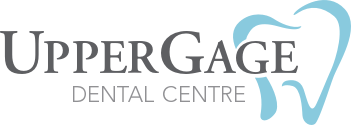Though flossing is an important part of oral health that acts as a crucial defence against plaque, gum disease, and cavities, it’s often overlooked.
Integral to a healthy smile, dentists recommend flossing your teeth at least once a day. This daily habit is crucial for removing plaque and food particles that your toothbrush can’t reach.
Flossing helps prevent gum disease and tooth decay and can contribute to oral health by removing debris that could lead to tartar build-up. It’s often recommended to floss at night to make sure that your teeth are clean before going to bed, as this is when bacteria can multiply.
However, the most important thing is that you floss regularly, regardless of the time of day, and visit your dentist for regular exams and cleanings.
The Dental Consensus
The Canadian Dental Association (CDA) emphasizes the importance of flossing at least once a day as an essential part of oral hygiene. This recommendation is based on flossing effectively removing plaque, bacteria, and food debris from areas between the teeth that a toothbrush cannot reach.
Regular flossing helps prevent cavities and gum disease and contributes to maintaining healthy teeth and gums. The CDA advocates making flossing a daily habit to ensure the best possible defence against oral health issues.
Proper Flossing Technique
For flossing to be most effective, it’s not just about frequency but also technique. Here’s a quick guide to proper flossing:
- Use about 18 inches of floss, winding most of it around one finger and the rest around the same finger of the opposite hand.
- Hold the floss tightly between your thumbs and forefingers, with about an inch of floss between them, and gently guide it down between your teeth.
- Curve the floss around the base of each tooth, ensuring you go beneath the gum line. Move the floss firmly against the tooth in a C shape.
- Use clean sections of floss as you move from tooth to tooth.
In addition to daily flossing, the CDA recommends replacing your toothbrush every three months or sooner if the bristles are frayed. Flossing combined with brushing and, where appropriate, the use of mouthwash forms a comprehensive oral care routine that can significantly reduce the risk of oral health problems.
Remember, while flossing is a key component of dental care, it should be complemented by regular dental exams. Professional cleanings and exams help catch any potential issues early and keep your smile healthy and bright.

Timing Matters
While flossing once a day is the standard, the time you choose to floss each day might enhance its benefits. Many dentists suggest flossing before brushing your teeth at night. This practice ensures that food particles and plaque loosened by flossing are brushed away thereafter.
However, the most critical factor is consistency. Choosing a time that fits seamlessly into your routine will make daily flossing a habit rather than a chore.
Beyond Traditional Flossing
There are alternatives for those who find traditional string floss challenging or uncomfortable. Water flossers, for example, use a stream of water to remove plaque and debris between teeth and below the gum line.
Interdental brushes and soft picks can also be effective, especially for those with braces or bridges. These alternatives still adhere to the once-a-day guideline but might fit some individuals’ preferences and needs better.
Listening to Your Body
While once a day is sufficient for most people, certain conditions might warrant more frequent flossing. Those with braces, experiencing gum disease, or prone to getting food stuck between their teeth might benefit from flossing after every meal. Listening to the advice of your dentist, who can provide personalized recommendations based on your oral health, is crucial.
Securing a Healthier Smile in Hamilton
Flossing daily is a small habit that can significantly impact your oral health, acting as a preventative measure against more severe issues. The goal of flossing is not just to meet a quota but to maintain the health of your teeth and gums.
By incorporating flossing into your daily routine, you’re investing in your oral health’s future, making sure that your smile remains bright and healthy for years to come.
Whether it’s traditional string floss, a water flosser, or another tool that works best for you, the key takeaway is consistency. Flossing once a day, with careful attention to technique, can greatly contribute to your overall dental hygiene. And as always, regular dental exams with your dentist will complement your at-home care regimen, keeping your smile at its best.
Upper Gage Dental Centre’s mission is to give you a confident and healthy smile. Our expert team offers top-notch dental care tailored to your unique needs, all in a cozy setting. Whether it’s time for your regular exam or you need specialized dental services, we’ve got you covered. Ready to take the next step towards a healthier, more radiant smile? Book your appointment today.



